Ciera Patyka-Worley, Dr. Brian Jackson, Sevio Stanton
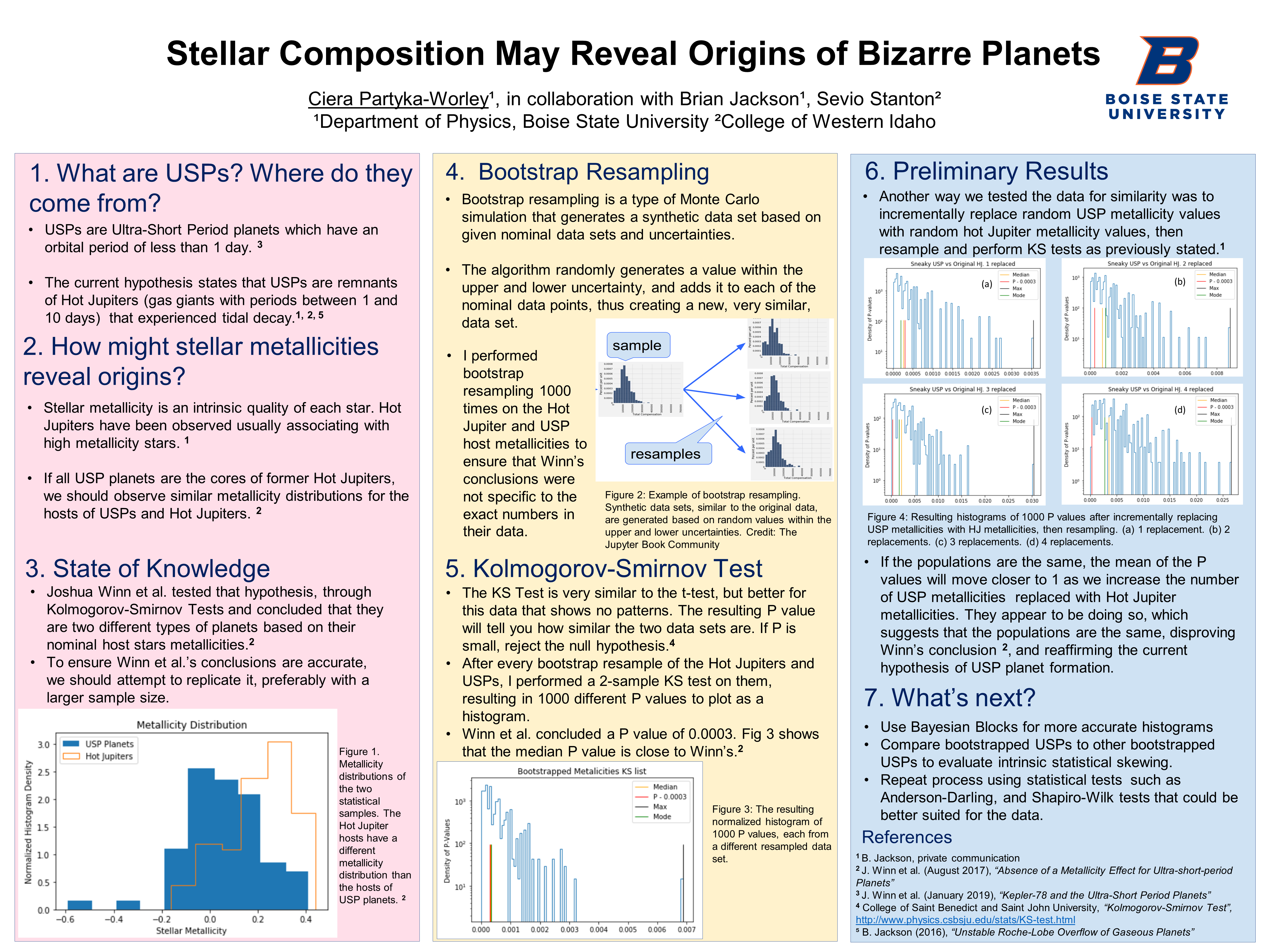
What are USPs? Where do they come from?
- USPs are Ultra-Short Period planets which have an orbital period of less than 1 day. (reference number 3)
- The current hypothesis states that USPs are remnants of Hot Jupiters (gas giants with periods between 1 and 10 days) that experienced tidal decay. (reference numbers 1, 2, 5)
How might stellar metallicities reveal origins?
- Stellar metallicity is an intrinsic quality of each star. Hot Jupiters have been observed usually associating with high metallicity stars. (reference number 1)
- If all USP planets are the cores of former Hot Jupiters, we should observe similar metallicity distributions for the hosts of USPs and Hot Jupiters. (reference number 2)
State of Knowledge
- Joshua Winn et al. tested that hypothesis, through Kolmogorov-Smirnov Tests and concluded that they are two different types of planets based on their nominal host stars metallicities. (reference number 2)
- To ensure Winn et al.’s conclusions are accurate, we should attempt to replicate it, preferably with a larger sample size.
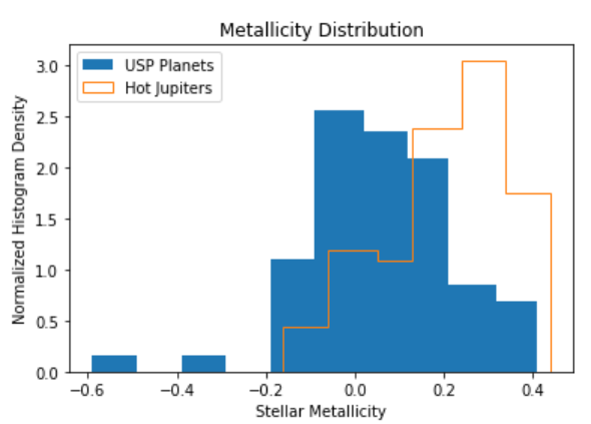
Bootstrap Resampling
- Bootstrap resampling is a type of Monte Carlo simulation that generates a synthetic data set based on given nominal data sets and uncertainties.
- The algorithm randomly generates a value within the upper and lower uncertainty, and adds it to each of the nominal data points, thus creating a new, very similar, data set.
- I performed bootstrap resampling 1000 times on the Hot Jupiter and USP host metallicities to ensure that Winn’s conclusions were not specific to the exact numbers in their data.
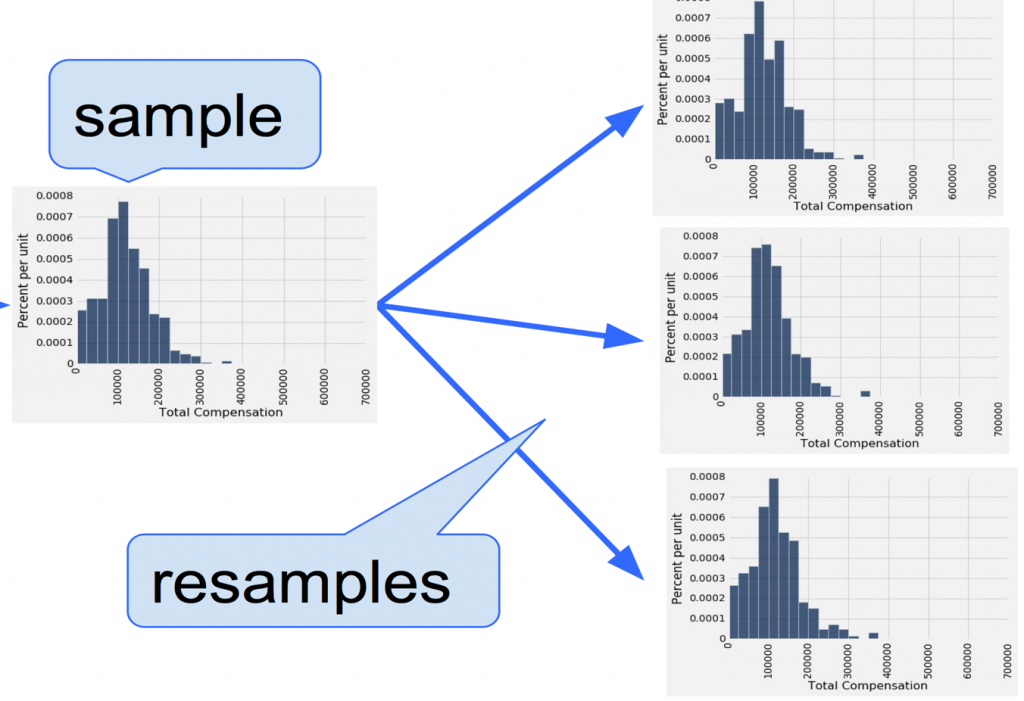
Kolmogorov-Smirnov Test
- The KS Test is very similar to the t-test, but better for this data that shows no patterns. The resulting P value will tell you how similar the two data sets are. If P is small, reject the null hypothesis. (reference number 4)
- After every bootstrap resample of the Hot Jupiters and USPs, I performed a 2-sample KS test on them, resulting in 1000 different P values to plot as a histogram.
- Winn et al. concluded a P value of 0.0003. Fig 3 shows that the median P value is close to Winn’s. (reference number 2)
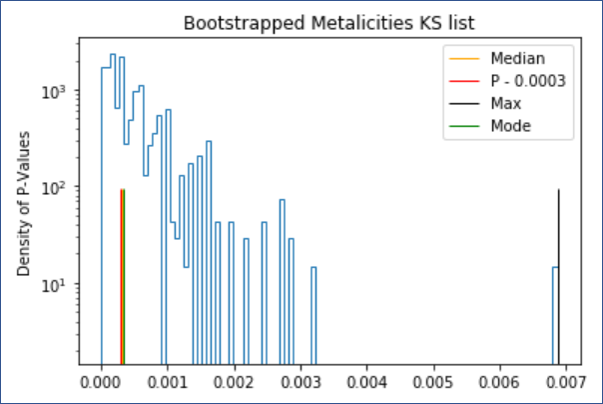
Preliminary Results
- Another way we tested the data for similarity was to incrementally replace random USP metallicity values with random hot Jupiter metallicity values, then resample and perform KS tests as previously stated. (reference number 1)
- If the populations are the same, the mean of the P values will move closer to 1 as we increase the number of USP metallicities replaced with Hot Jupiter metallicities. They appear to be doing so, which suggests that the populations are the same, disproving Winn’s conclusion 2, and reaffirming the current hypothesis of USP planet formation.
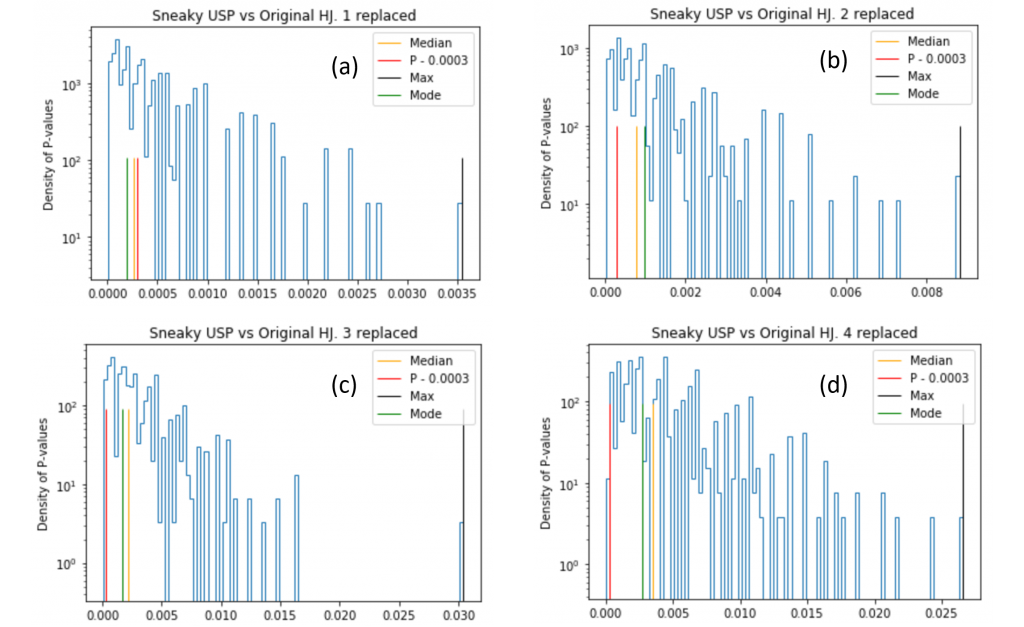
What’s next?
- Use Bayesian Blocks for more accurate histograms
- Compare bootstrapped USPs to other bootstrapped USPs to evaluate intrinsic statistical skewing.
- Repeat process using statistical tests such as Anderson-Darling, and Shapiro-Wilk tests that could be better suited for the data.
References
- B. Jackson, private communication
- J. Winn et al. (August 2017), “Absence of a Metallicity Effect for Ultra-short-period Planets”
- J. Winn et al. (January 2019), “Kepler-78 and the Ultra-Short Period Planets”
- College of Saint Benedict and Saint John University, “Kolmogorov-Smirnov Test”, http://www.physics.csbsju.edu/stats/KS-test.html
- B. Jackson (2016), “Unstable Roche-Lobe Overflow of Gaseous Planets”
Additional Information
For questions or comments about this research, contact Ciera Partyka-Worley at cierapartyka@u.boisestate.edu.